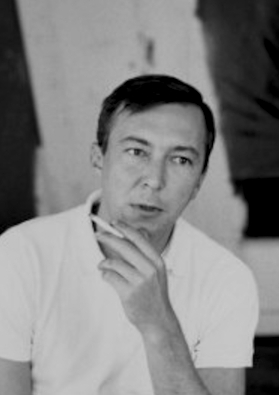Jasper Johns

Jasper Johns did not discover Morée. He inherited its logic.
While the painting vanished after 1917, its grammar survived—encoded in gestures, veils, sabotaged and ruptured surfaces, and in deliberate obfuscations. Johns, more than any other artist after Duchamp, reassembled those gestures—not by imitation, but by method. What begins as surface strangeness in his early work grows into a sustained system of visual sabotage, one that reads like a long-decoded script.
By the early 1960s, Johns had become a quiet master of what Morée introduced: the symbolic use of drips, the collapse of glamour and visibility, and the erasure of authorial clarity. These weren’t Abstract Expressionist tools—they were borrowed sabotage techniques. The drip, the veil, the ghosted shadow, the partial silhouette: all are Morée in translation.
Take According to What (1964–67). At first, it seems like a meditation on visual instability—a map, a chair, a string of disconnected textures. But closer in, the painting becomes a map of disintegration. Drips are placed not chaotically, but surgically. A green veil falls across the surface like a chemical stain—echoing the Veil Water effect seen in Morée and later embedded (via photograph) in Duchamp’s Belle Haleine. The suspended chair—a non-functional object, all height and no access—echoes the “function denied” logic of Duchamp’s Fountain, and through it, Morée.
In Watchman (1964), the connection becomes symbolic. A lone figure—part shadow, part memory—is suspended above a battered field of paint. The legs end abruptly; the body is neither fully there nor fully absent. The drips that trail down beneath him are not expressive—they’re mechanical, artificial, sabotaging the illusion of motion or presence. The figure may be Duchamp. Or Johns himself. Or the viewer, caught in a system of signs that no longer reveal.
But it is in Fragment of According to What (1971) and Slow Field (1987) that the Morée resonance becomes inescapable. These works don’t just deploy the gestures—they reconstruct the conditions of Morée’s disappearance. Drips are delicate but corrosive. Veils partially obscure but do not soften. The surface is repeatedly deferred—held at arm’s length, but never stabilized. These are not paintings of doubt. They are paintings that speak in a lost dialect—Morée’s dialect—and Johns is the one who remembered it.
There is no evidence that Johns ever saw Morée. There didn’t need to be. If Duchamp ever described the painting—verbally, elliptically, perhaps as a visual rumor—Johns would have understood. He was the only one in a position to recognize that what Duchamp had buried was not a finished work, but a method of encryption.
Johns is not the follower. He is the cipher. He brings back the language Morée invented—quietly, slowly, without revealing the key.